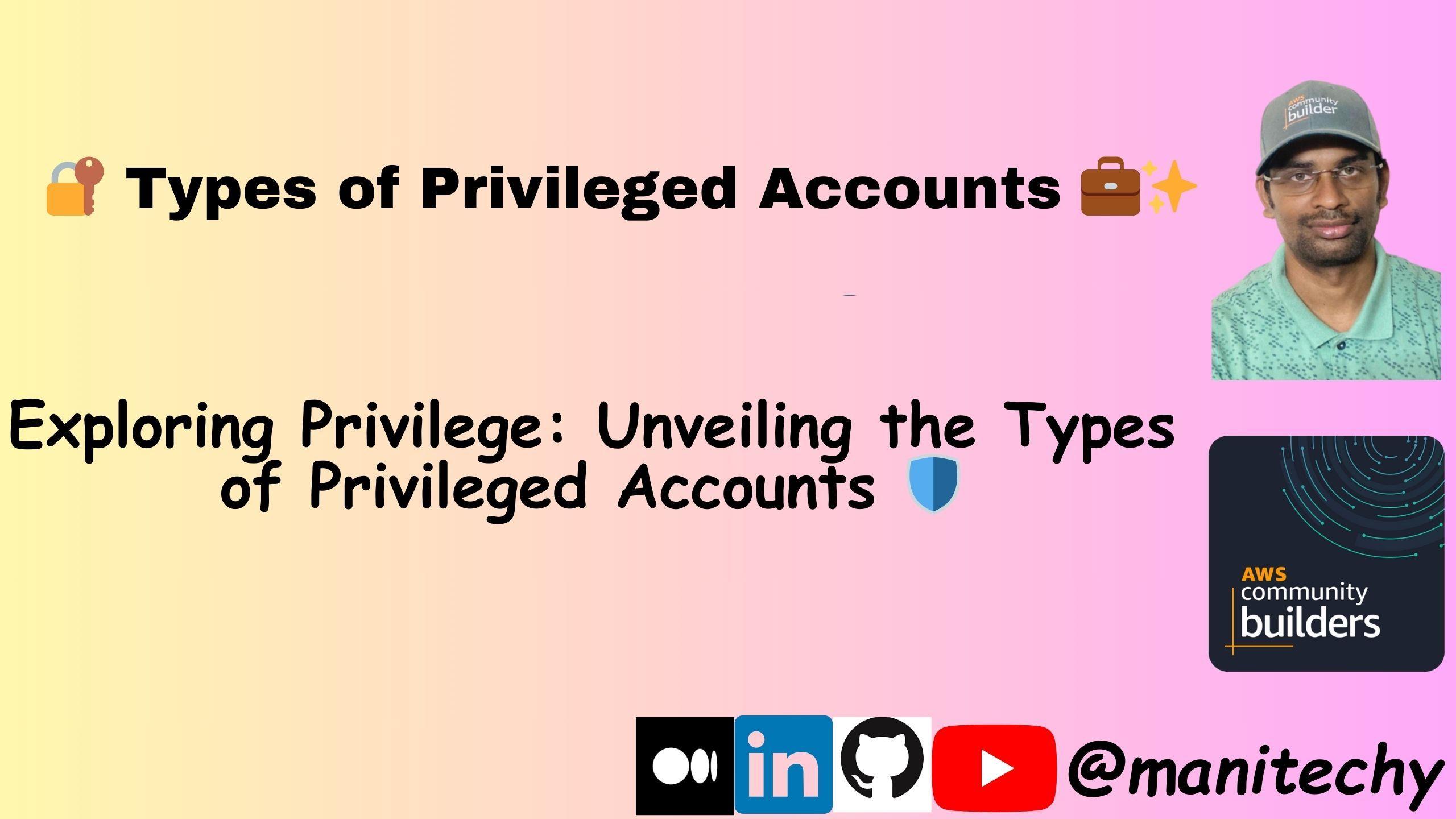
🔐 Types of Privileged Accounts 💼✨
various types of privileged accounts and how to protect them, here are some pieces of advice.
Published Dec 5, 2023
1. ROOT or Super User Accounts:-
- Use the Highest access level for system and network control.
- Attack Vectors Targeted for exploitation through OS vulnerabilities or social engineering.
How to Protect:
- Implement strong authentication.
- Regularly update the OS.
- Use intrusion detection systems (IDS/IPS).
- Restrict access to trusted administrators.
2. Admin Accounts
- Use In Windows Administrator environments, with extensive access.
- Attack Vectors Vulnerability exploits, brute force attacks, or privilege escalation.
How to Protect:
- Enforce strong password policies.
- Implement two-factor authentication (2FA).
- Restrict administrative access to necessary personnel.
- Regularly patch Windows systems.
3. Database Admin Accounts
Use: Managed by DBAs for database control and optimization.
Attack Vectors: Exploitation of weak configurations, SQL injection, or phishing attacks.
How to Protect:
- Use strong database access controls.
- Regularly update the database software.
- Apply least privilege principles.
- Monitor database activity.
4. Service Accounts
- Use Utilized by applications or services with elevated privileges.
- Attack Vectors Compromised through application vulnerabilities, weak credentials, or privilege escalation.
How to Protect:
- Protect the applications.
- Limit service account privileges.
- Secure and regularly rotate passwords.
- Monitor service account activity.
5. Application Accounts
- Use Run specific applications with predefined permissions.
- Attack Vectors Targeted for application vulnerabilities, weak permissions, or stolen credentials.
How to Protect:
- Secure the applications.
- Apply the principle of least privilege.
- Enforce strong authentication.
- Regularly monitor and audit activity.
6. Vendor or Third-Party Accounts
- Use Privileged access for third-party support.
- Attack Vectors : Compromised through supply chain attacks, social engineering, or vendor weaknesses.
How to Protect:
- Vet and audit third-party vendors.
- Restrict external access.
- Require strong authentication.
- Monitor third-party activity.
7. Privileged User Accounts
- Use: Elevated access for specific tasks by employees or administrators.
- Attack Vectors: Insider threats, social engineering, or phishing.
How to Protect:
- Educate on security best practices.
- Enforce strong password policies.
- Regularly monitor and audit activity.
- Implement user behaviour analytics.
8. Emergency Break-Glass Accounts
- Use Emergency access when standard access is unavailable.
- Attack Vectors Targeted through weak password management or unauthorized access.
How to Protect:
- Encrypt and protect emergency account credentials.
- Restrict access to trusted individuals.
- Implement strong multi-factor authentication.
- 9. Shared Accounts
- Use Shared access for designated purposes.
- Attack Vectors Password sharing, weak access controls, unauthorized access.
How to Protect:
- Implement strong access controls.
- Enforce individual accountability.
- Regularly change shared account passwords.
- Audit shared account activity.
Stay secure and informed! 🛡️✨ #CyberSecurity #PrivilegedAccess #TechSecurity 🚀
